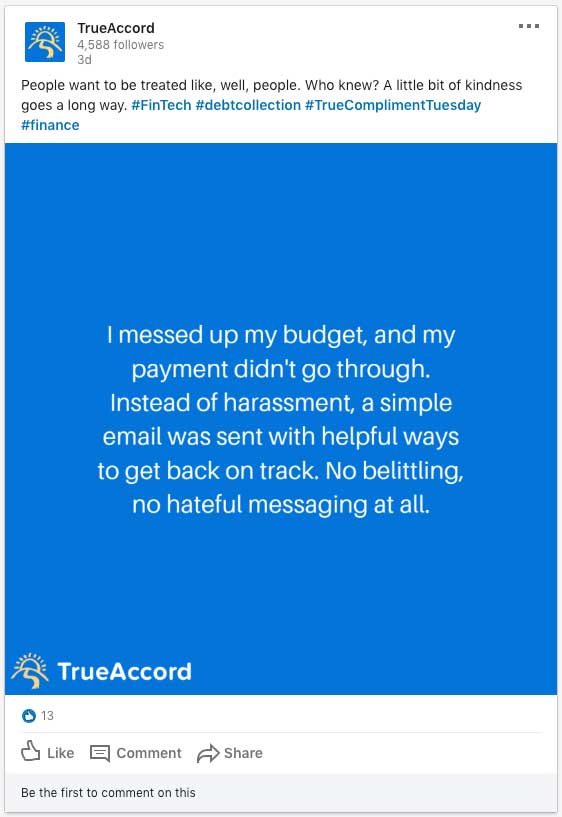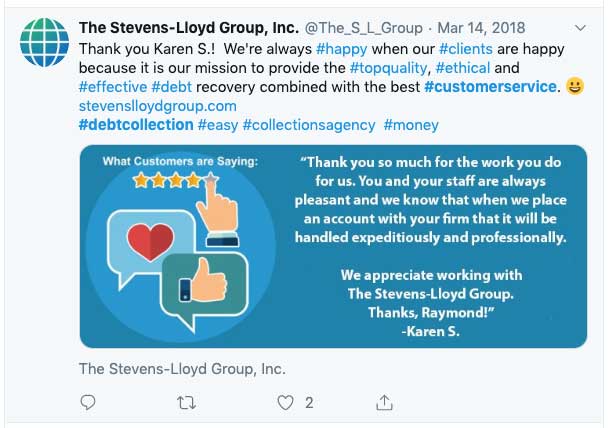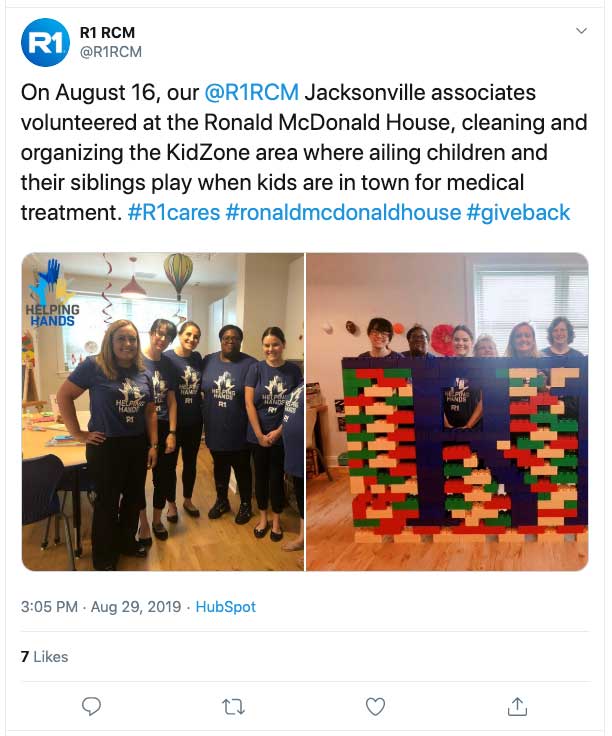Share this Article
By now, social media has become part of almost everyone’s daily life. Even for businesses, it’s expected to have a presence on at least one platform. However, using social media is tricky for those in Accounts Receivable. Does your agency know how to use social media? Do you understand why it’s so important?
Why Use Social Media In ARM?
When you are not a direct B2C operation, it can be hard to understand how a social presence can benefit your company. Jeff DiMatteo, owner of American Profit Recovery is a great example of effectively using social media in debt collection.
“It allows us to educate those who are interested in learning more about debt collections and how the industry has changed for the better over the years. It fosters trust with our customers as well as consumers because we stay true to our values in everything we do.”Jeff DiMatteo
Like DiMatteo says, the main goal of social media is to get people to know your business. If you’re mindful of how you use these platforms, you’ll see other benefits of using social media.
Build Your Brand Identity
Your corporate website is the centerpiece of your brand identity but social media can also be used to grow your audience and create a more complete picture of your agency. To maintain consistent brand identity, identify the appropriate tone and voice to use during postings. This should match the basic style you use on your website. However, social media is more informal, which will give you a little room to show your personality.
“A brand identity is made up of what your brand says, what your values are, how you communicate your product, and what you want people to feel when they interact with it. Essentially, your brand identity is the personality of your business and a promise to your customers.”Hubspot
Enhance Credibility and Image
A social presence is now almost an expected practice. Having one or more accounts and using them appropriately will enhance the credibility of your company. If you use your platforms properly, you can boost your image and show followers the more human side of Accounts Receivable. Here are a few ideas to enhance your image:
Share how you have helped consumers get back on their feet financially.

Provide testimonials from consumers or clients about your customer service

Post employee spotlights of those in your agency who are doing an exceptional job.

Highlight volunteer work or service projects your agency is involved in.

Facilitate Customer Interaction
Your social profiles are another way to provide your website address and telephone number for consumers that have questions about their account. For those who keep track of testimonials or reviews from consumers, you can also post requests for them to submit their feedback.
Consider a dedicated email address or website page for receiving these comments. That way, the comments are not publicized until you have read/approved them – which can protect against potential third party disclosure or other issues.
Promote Company Culture
DiMatteo says that using social media also helps to boost the company culture and positivity at his agency and even attract new employees.
“It helps to make our employees proud of their company and industry by seeing all the good that we do. And having an active social media profile allows us to show potential talent that having a career in the debt collection field and specifically our company is something to consider and worth their time seeking out.”Jeff DiMatteo
Social Media Management
The benefits of a corporate social presence are numerous, but you need to be cautious of how you execute your social strategy. When managing social media in the Accounts Receivable industry:
Post Frequently
Keep posting in your channels active. Having a channel that hasn’t been updated in months is almost as bad (or even worse) than having no profile at all. People may assume you have gone out of business, changed your name, or perhaps that you are not a legitimate company. Any of these assumptions will hurt your image with potential clients when marketing your agency and will decrease the chances of collecting from a skeptical consumer.
Stay On Brand
Only post about items relating to your business or industry, or content that will be helpful to followers. Always be sure articles you share are from a trusted source. Sharing questionable content will bring down your image and make your agency look less credible.
While posting from a corporate account, use the third person or first person plural (example: PDCflow, or “we”). There may be only one individual managing your social media, but that person represents your entire organization. This needs to be reflected in the language of your posts.
Identify Risks and Challenges
Opening more channels to the public (just as with any other form of communication in business) can potentially open you to risk and create new challenges in your work process. As long as you evaluate these risks and challenges, and create internal policies and procedures that address them, the pros of a social presence will outweigh the cons. A few of the risks and challenges you should be aware of for social media:
- Makes Complaints Public - Some complaints are to be expected in Accounts Receivable. You should decide upfront if you wish to create a procedure for responding to comments. Be sure if you do, the response doesn’t violate third party disclosure. If you don’t have the resources to monitor comments or don’t wish to open yourself to the risk, many social media platforms allow you to disable comments on posts.
- Takes Time/Attention - As mentioned earlier, social channels must be routinely maintained. You need to carefully consider who within the agency will be responsible for posting, interacting with customers and keeping up with news to share with followers.
ARM industry professionals have a rough reputation because of bad actors in the industry. DiMatteo sees social media as a unique opportunity to change that public perception.
“I think the main thing is that it shows people that debt collectors are real people and are not the bad guys. We do great things at our companies for consumers, clients and employees.”Jeff DiMatteo
To learn more about building your audience through not just social media, but your website as well, download this how-to guide:




